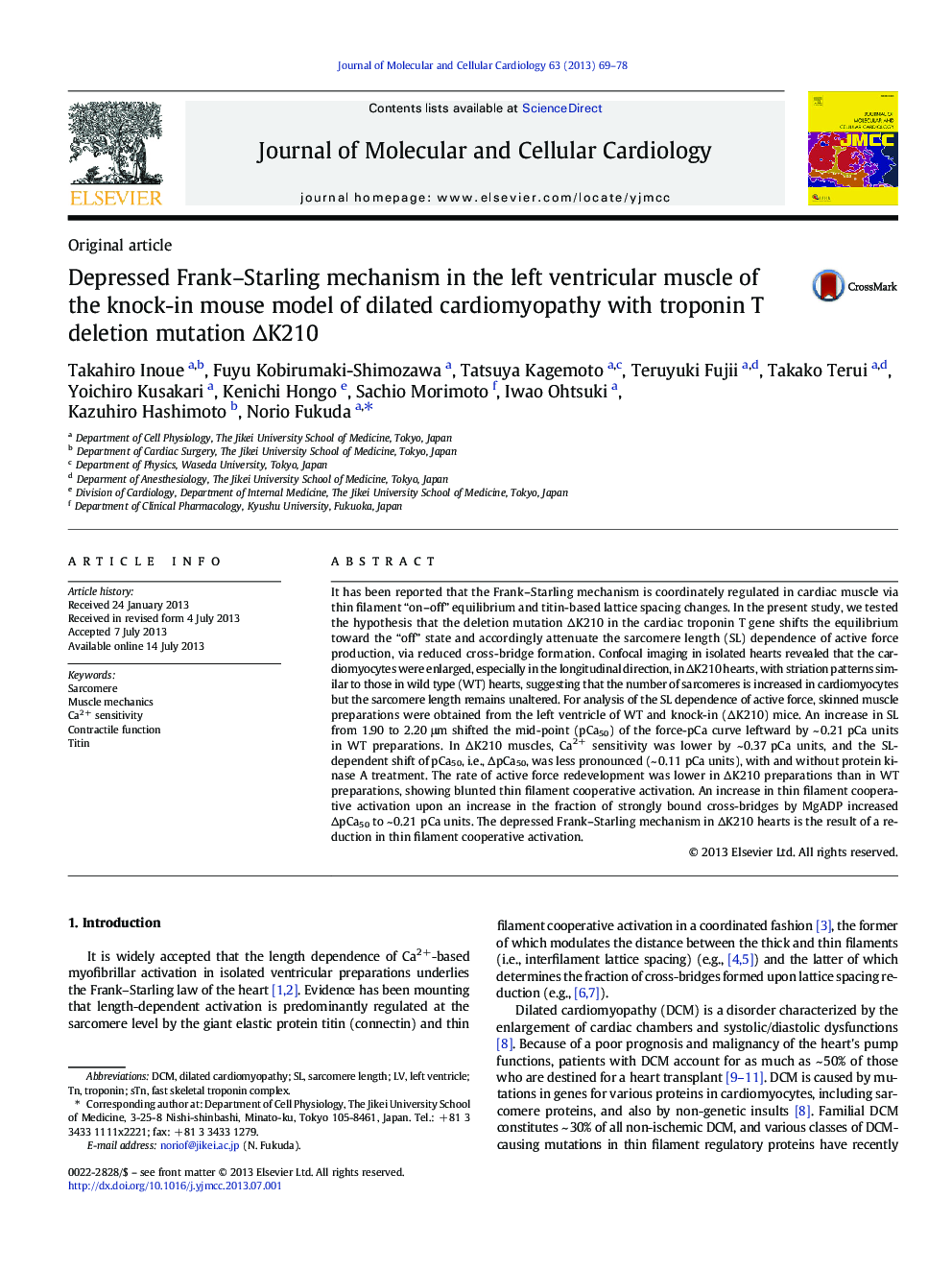| Article ID | Journal | Published Year | Pages | File Type |
|---|---|---|---|---|
| 8475044 | Journal of Molecular and Cellular Cardiology | 2013 | 10 Pages |
Abstract
It has been reported that the Frank-Starling mechanism is coordinately regulated in cardiac muscle via thin filament “on-off” equilibrium and titin-based lattice spacing changes. In the present study, we tested the hypothesis that the deletion mutation ÎK210 in the cardiac troponin T gene shifts the equilibrium toward the “off” state and accordingly attenuate the sarcomere length (SL) dependence of active force production, via reduced cross-bridge formation. Confocal imaging in isolated hearts revealed that the cardiomyocytes were enlarged, especially in the longitudinal direction, in ÎK210 hearts, with striation patterns similar to those in wild type (WT) hearts, suggesting that the number of sarcomeres is increased in cardiomyocytes but the sarcomere length remains unaltered. For analysis of the SL dependence of active force, skinned muscle preparations were obtained from the left ventricle of WT and knock-in (ÎK210) mice. An increase in SL from 1.90 to 2.20 μm shifted the mid-point (pCa50) of the force-pCa curve leftward by ~ 0.21 pCa units in WT preparations. In ÎK210 muscles, Ca2 + sensitivity was lower by ~ 0.37 pCa units, and the SL-dependent shift of pCa50, i.e., ÎpCa50, was less pronounced (~ 0.11 pCa units), with and without protein kinase A treatment. The rate of active force redevelopment was lower in ÎK210 preparations than in WT preparations, showing blunted thin filament cooperative activation. An increase in thin filament cooperative activation upon an increase in the fraction of strongly bound cross-bridges by MgADP increased ÎpCa50 to ~ 0.21 pCa units. The depressed Frank-Starling mechanism in ÎK210 hearts is the result of a reduction in thin filament cooperative activation.
Keywords
Related Topics
Life Sciences
Biochemistry, Genetics and Molecular Biology
Cell Biology
Authors
Takahiro Inoue, Fuyu Kobirumaki-Shimozawa, Tatsuya Kagemoto, Teruyuki Fujii, Takako Terui, Yoichiro Kusakari, Kenichi Hongo, Sachio Morimoto, Iwao Ohtsuki, Kazuhiro Hashimoto, Norio Fukuda,
